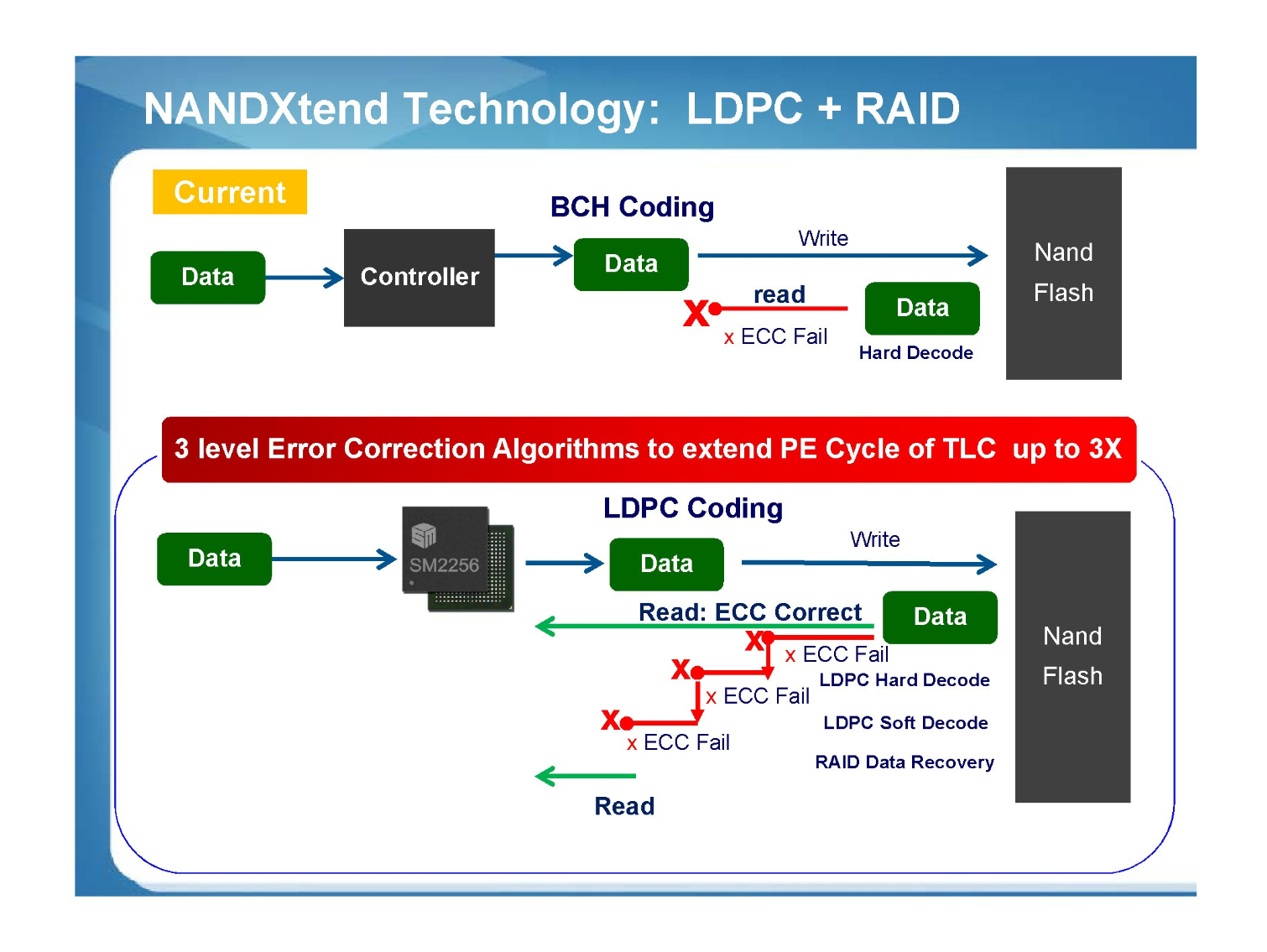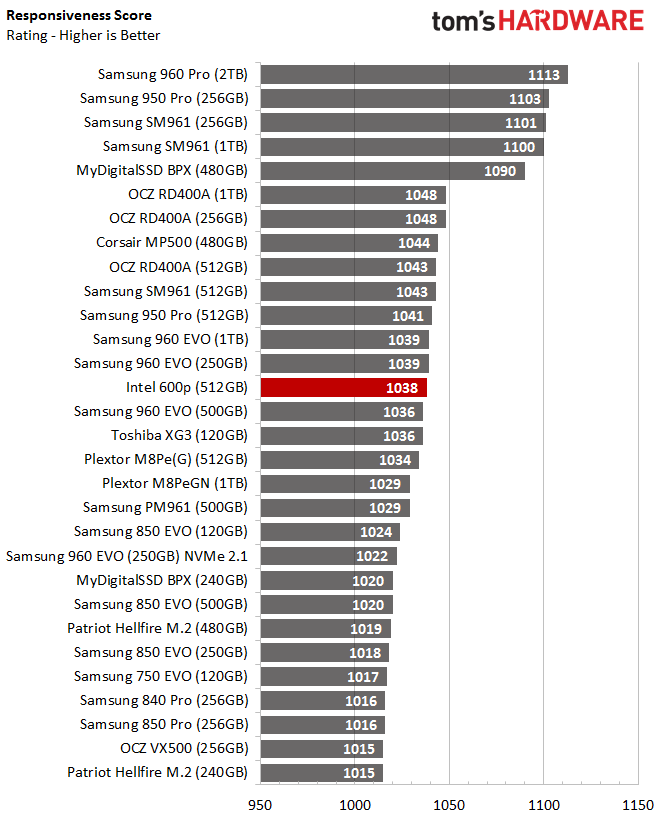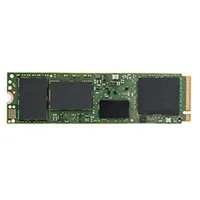Breaking Intel's 600p NVMe SSD: Endurance Pushed To The Limit
End-Of-Life Testing And Conclusion
Low-Density Parity Check (LDPC) is an advanced Error Correction and Control (ECC) algorithm used to extend NAND life. The technology first appeared in consumer SSDs with the introduction of 3-bit per cell (TLC) planar NAND, but now it also appears in some 2-bit per cell (MLC) 3D NAND products. LDPC is used in many different applications, such as satellite transmissions. In SSDs, the technology is roughly three times more powerful than the legacy BCH ECC algorithms that it replaced.
In a very simplified form, a modern SSD will use low-latency hard decision decoding first to recover a failed cell. If that fails, the SSD will shift to soft decision decoding, which requires more processing power. Soft decision decoding retrieves additional data from the failed cell, and surrounding cells, to recover the data. The miss with hard coding, and the resulting retry with soft decoding, adds increased latency to the read operation.
End-Of-Life Performance Testing
The Intel 600p is the first LDPC-enabled SSD we've pushed to the point of failure. Soft decision error correction can occur at any point, but it becomes more common during the latter phases of the flash's life. We decided to test the drive after the heavy wear to see if we could spot any performance variation due to an increased number of soft decision error corrections. With 10% life remaining, we ran a few tests to observe any latency changes and compare the results to our first tests. We couldn't push the degraded drive through our full test suite for fear of it dying in the middle, so we ran an abbreviated test session.
Four Corners Test
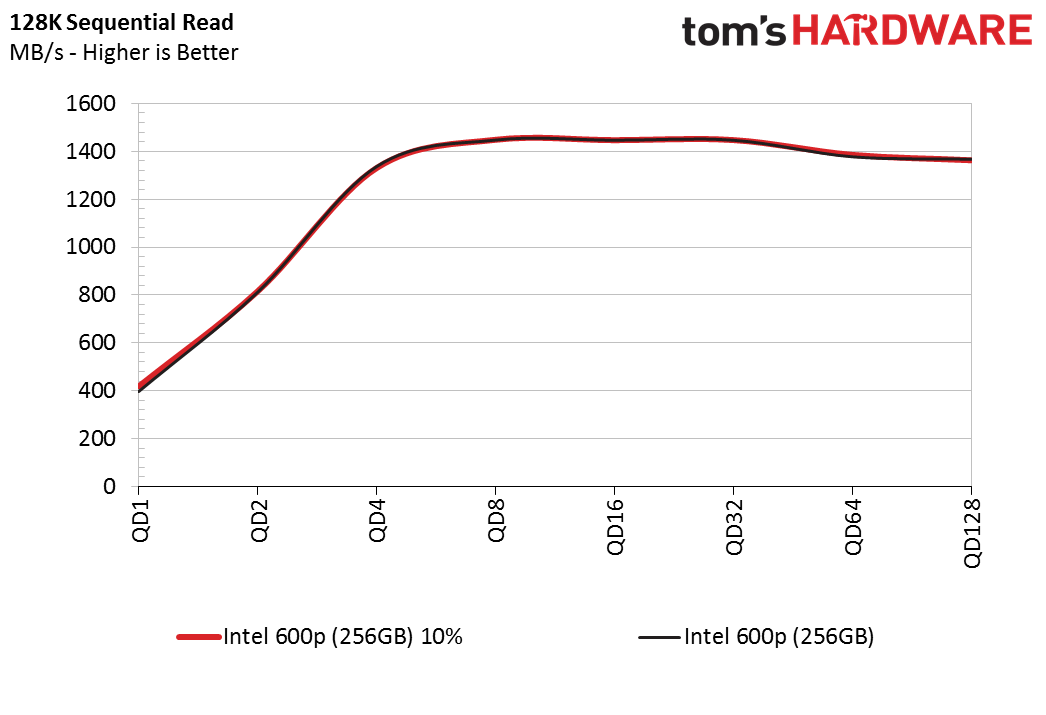
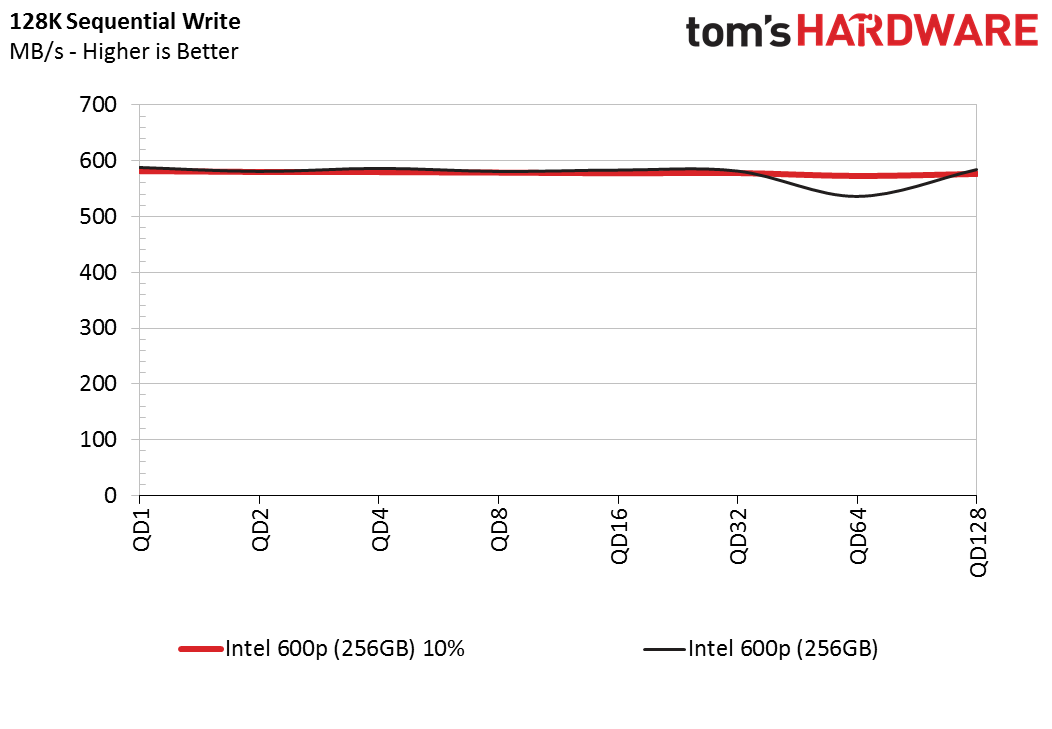
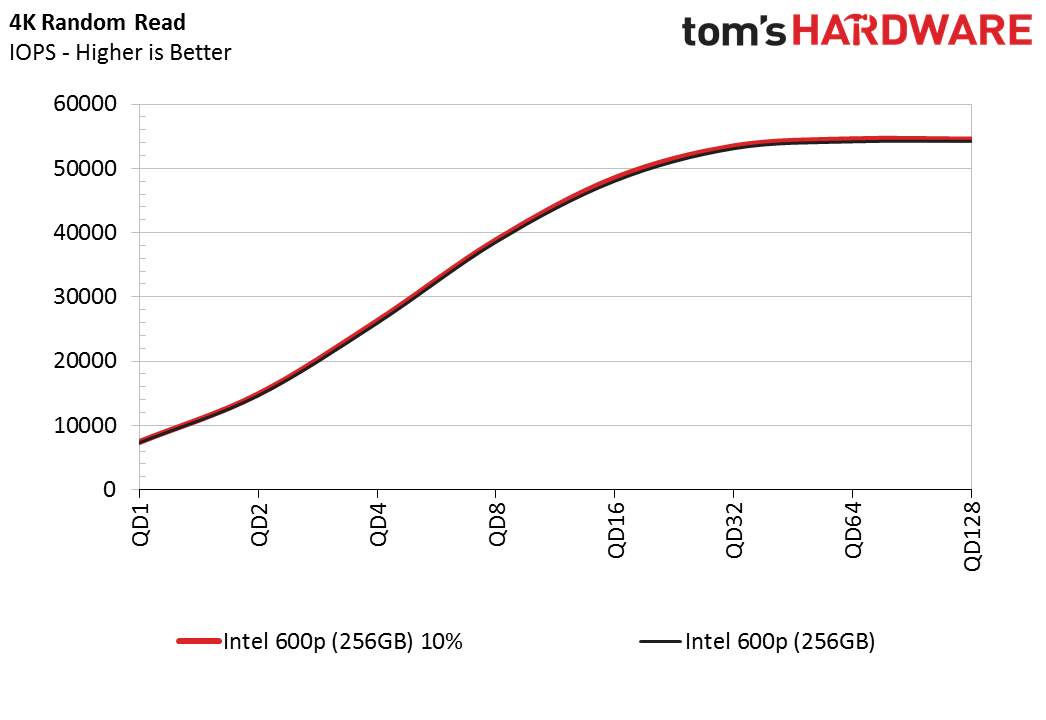
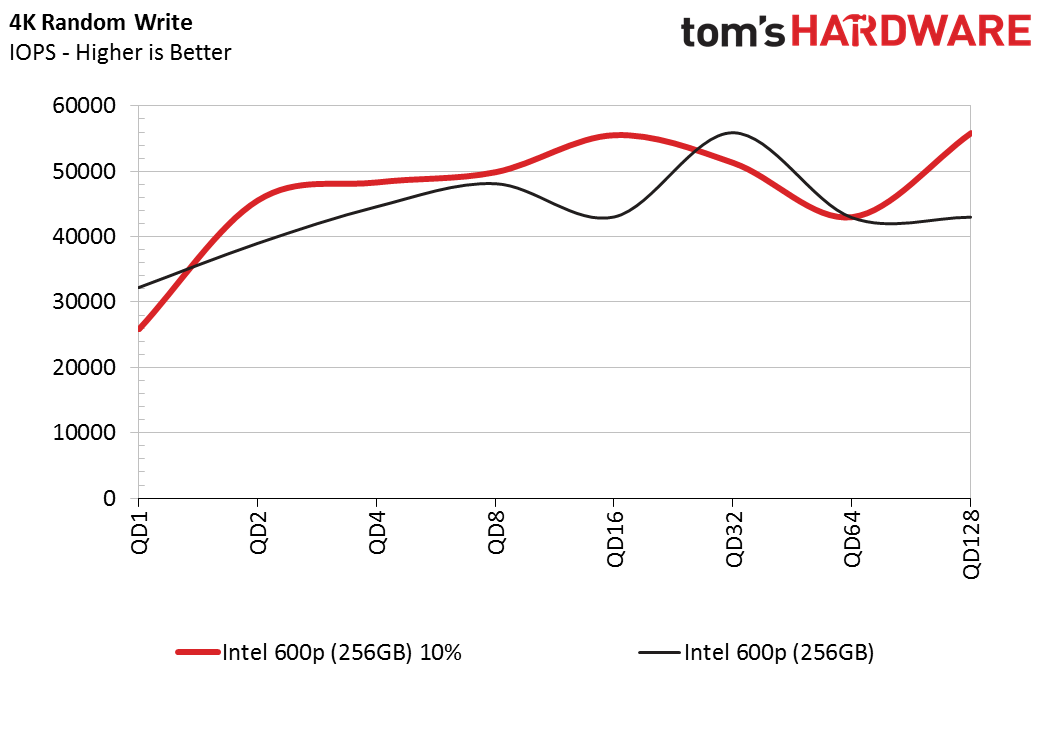
We didn't observe any significant performance changes in the synthetic tests. These are "quick hit" tests that we designed to measure burst performance. The Intel 600p is bursty in nature because it uses an inconsistent SLC buffer. With only a little time to stress the drive, we factored in the bursty workload during the degraded drive test to get an accurate measurement.
Real-World Software Testing

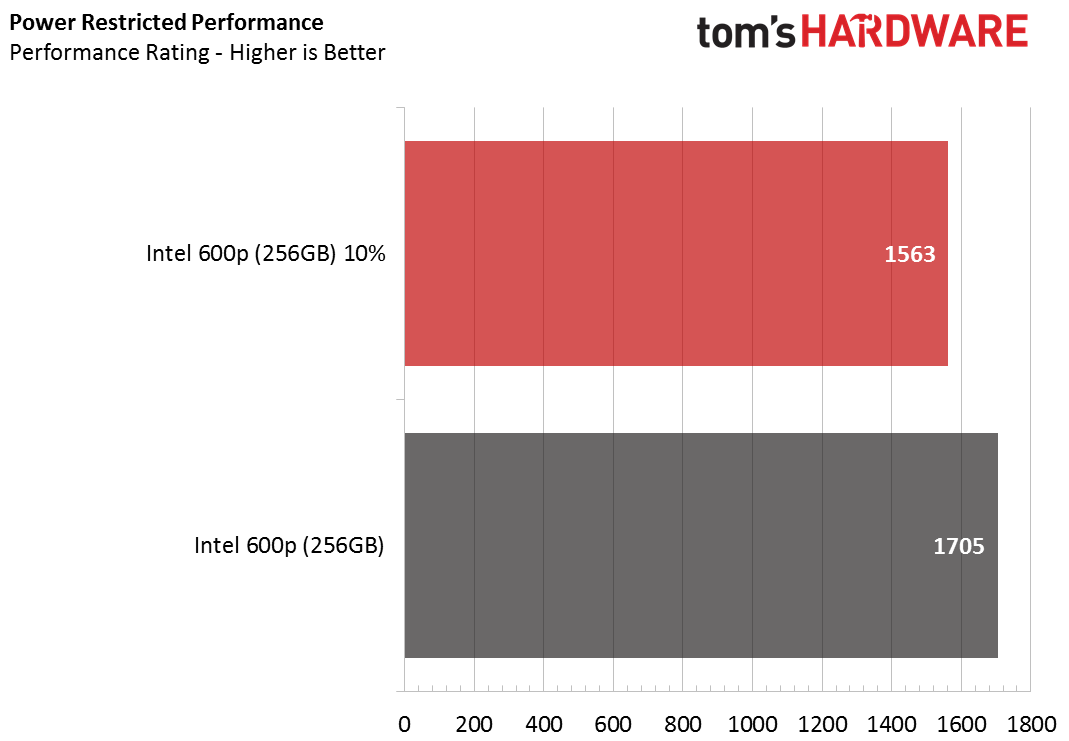
Our notebook battery life test using the Lenovo Y700-17 and BAPCo MobileMark 2014.5 did reveal a few slight differences. This test lasts over five hours, runs on real software with the device under test as the operating system disk, and is a true representation of your computer workload over an average workday.
We chose the test for two reasons. It's a real test with real software, but it also measures both performance and power. The soft decode process after a hard decode "miss" will increase power consumption momentarily. A hard decode miss will also decrease performance if it happens enough during our five-hour test.
We observed a nine-minute battery life decrease and a 142-point performance decrease. It's not a massive shift in performance, but it is enough to measure.
Get Tom's Hardware's best news and in-depth reviews, straight to your inbox.
Conclusion
Like its other SSDs, Intel built the 600p with reliability in mind. Intel prides itself on very low return numbers, and at one point, it led the industry. That may still be true today, but we don't have the data to say one way or the other. Intel is one of the only companies that will lock the SSD before allowing the user to get into a dangerous state where data loss can occur.
Reputable endurance tests from media outlets show that some SSD manufacturers will allow you to write massive amounts of data beyond the endurance threshold--sometimes into the low petabyte range. However, the testers don't follow JEDEC testing standards and usually fail to factor in data retention during extended power-off periods. Consumer SSDs don't just have to keep writing data to meet JEDEC's requirements; they also have to retain the data for a period of time without power.
We think Intel is very aggressive with the amount of data written before moving into a read-only state. That is likely why we didn't see any latency in our synthetic tests even with only 10% of SSD life left. Our test with a lighter workload but over a larger LBA range and a longer time did show some performance degradation, but not enough to where we can point a finger and accurately identify it as LDPC latency.
The Intel 600p is a low-cost and reliable SSD, and for most users that is good enough. The chart above shows the top 30 consumer SSDs in a new test released by BAPCo. The company designed this subtest of SYSmark 2014 SE to show how responsive the storage subsystem is. In the future, we will examine the full test and how it calculates the score. The numbers come from a true client workload with real software running on a dedicated platform. The numbers represent a value over a base system with the reference being 1000. BAPCo scored the reference value with a Samsung OEM SSD that is closely related to the 750 EVO 250GB.
The Intel 600p 512GB is faster than every SATA product we've tested, including premium models like the SanDisk Extreme Pro, Samsung 850 Pro and Samsung 850 EVO. There are SSDs that are more responsive, but none match the 600p’s low price point. A few NVMe SSDs perform better, but only cost a few dollars more and deliver higher endurance, as well.
MORE: Best SSDs
MORE: Latest Storage News
MORE: Storage in the Forums

Chris Ramseyer was a senior contributing editor for Tom's Hardware. He tested and reviewed consumer storage.
-
2Be_or_Not2Be "A few NVMe SSDs perform better, but only cost a few dollars more and deliver higher endurance, as well. "Reply
So.... which ones only cost a few dollars more but perform better? -
LiviuTM MyDigital BPX, for example? http://www.mydigitaldiscount.com/mydigitalssd-pcie-m.2-ssd/Reply -
Brian_R170 I've got three of the 512GB 600p in three different desktops in my home, so it's reassuring that they have reasonable endurance for a consumer SSD and that they fail in a way that protects your data. They're certainly not stellar NVMe performers, but for the price (mine were $180, $130, and $130 from Newegg), they still seem like a pretty good compromise between performance and value, especially given that I tend to replace drives every 3 years to move to a new technology/formfactor/capacity/etc.Reply -
kiniku Now subject the same punishment methodology to a Samsung NVMe drive and share with us the results.Reply -
CRamseyer Chris Ryan, a former Tom's Hardware editor wrote something like 1.7PB to a Samsung drive around 5 years ago. I don't know if I can free a computer up for that long. I'll look into how to manage a 960 Pro or EVO endurance test. The first step is getting the drives. Datacenters are buying them as fast as Samsung can make them. That's why they go in and out of stock.Reply -
2Be_or_Not2Be Reply19176198 said:MyDigital BPX, for example? http://www.mydigitaldiscount.com/mydigitalssd-pcie-m.2-ssd/
The review on Tom's for the MyDigitalSSD BPX was a good one to see other low-priced alternatives to Intel's 600p. Here's the 256GB performance comparison.
That being said, I still wish Intel never released this 600p. I always thought of them as having either the best performers or near the best. This 600p seems like it was released just to hit a low price point for a NVMe drive. Who knows, maybe they just wanted a way to sell NAND that didn't perform well enough for their bigger enterprise SSDs or even their mid-level consumer grade SSDs. -
bit_user First, thanks for doing this investigation. This is true tech journalism.Reply
Second, to anyone who thinks 39 GB/day is higher than the typical home user requires, please check the I/O usage of Firefox (or other popular web browsers). I typically have several tabs open, in each of several windows. It's not at all uncommon for me to see 39 GB/day of bytes written. When you take into account write amplification, the true number could be several times this.
I think the main culprits are HTML5 that uses local storage and caching, as well as Firefox's history, and recovery features. Of course, ad block would help, but eventually you might not have much of a web left to browse.
The Intel 600p includes a five-year warranty, but we suspect most users will replace the drive within that time.
Most users? You guys should get out and see how the real world uses tech. My work PC is a first-gen i7 Xeon from 2010. I was only allowed to replaced the original HDD after it died. If I'm lucky, I'll get to replace the box with a Skylake, this year.
I keep my home PCs & components for a long time, as well. I tend to put old SSDs into less demanding or less write-intensive uses, such as media streaming boxes. My fileserver is still booting off a Crucial RealSSD C300. Of the 13 SSDs I've bought, none has yet died on me - and all are still in service (though I only use a few, on a daily basis). -
panathas Great! Now at the end of its life this SSD becomes a brick with all of your data on it and there is no way to delete them since it's like a DVD in read-only mode. What happens if you want to throw it away? Is there a way to secure erase it or somehow destroy the data on it or you have to physically break and destroy the drive?Reply -
CRamseyer That is a very good question! I'll load the drive in a machine tomorrow and try to secure erase it.Reply
